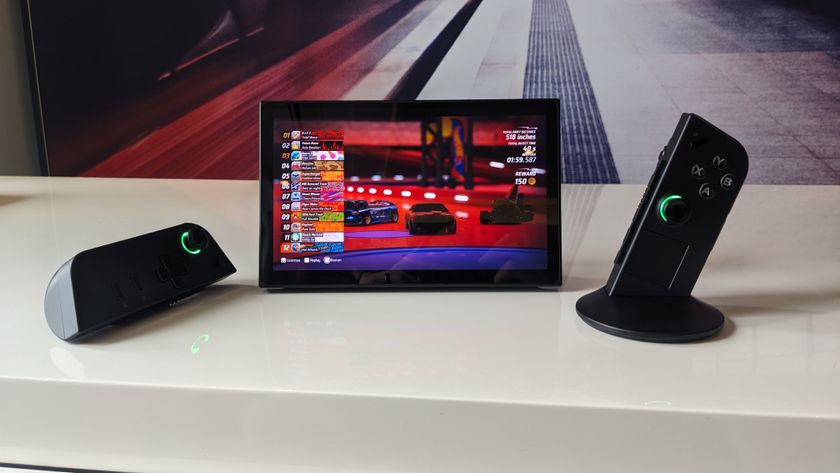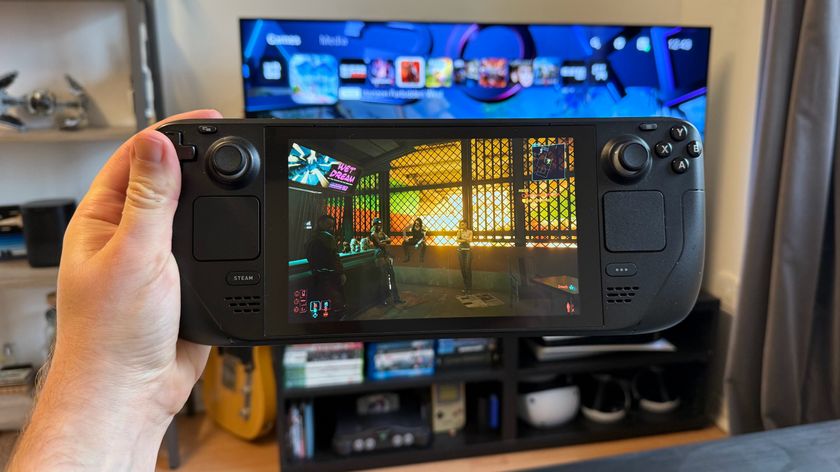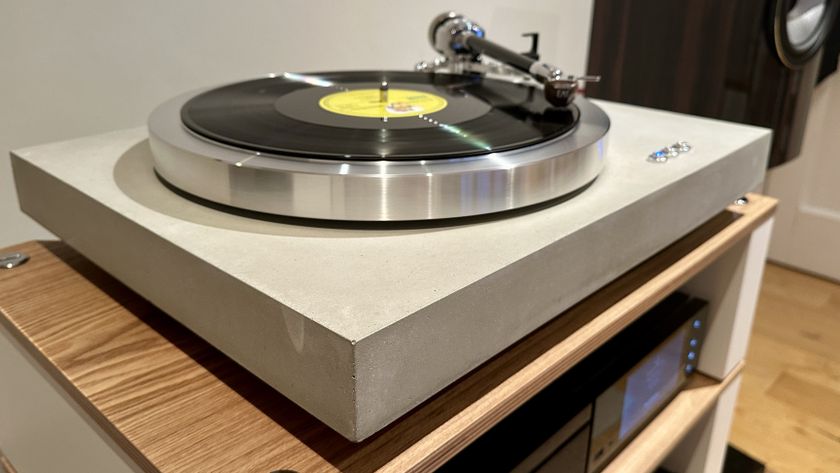TechRadar Verdict
SteelSeries proves with the Arctis 9 Wireless that a cordless headset can still deliver excellent, detailed audio. Not only that, but the headset offers plenty of comfort and enough battery life to last through quite a few extended gaming sessions on both PC and PS5.
Pros
- +
Excellent sound quality
- +
Comfortable
- +
Lag-free
- +
PS4 compatible
Cons
- -
Expensive
- -
Placement of control wheels on headset could be better
- -
Slightly confusing process to connect 2 sources
Why you can trust TechRadar
Two-minute review
The SteelSeries Arctis 9 Wireless gaming headset is a perfect example of why manufacturers should put less emphasis on looking cool and more on sound quality. All the flashy RGB lighting and prodigious aesthetic in the world doesn’t matter if quality and performance aren’t up to par.

It’s what SteelSeries has always done so well – putting what’s more important first, and the SteelSeries Arctis 9 isn’t any different. The SteelSeries Arctis 9 Wireless is a top-notch headset in many ways – one of the best PC gaming headsets and best PS4 headsets, in fact. Its lag-free with impressive sound quality and soundstage, has long battery life, and great comfort, while also bringing some great features such as its PS4 and PS5 compatibility to the table.
Its only major potential issue is a very subjective one – and something that we’re actually partial to. Gamers who enjoy RGB lighting and a more gamer-focused aesthetic will find the SteelSeries Arctis 9 Wireless to be a bit muted. However, considering that the only thing you’ll probably see is the end of its microphone when wearing them, this shouldn’t be too much of a concern for most.
The Arctis 9 Wireless is not SteelSeries’ most expensive headset, but it is in the upper reaches of the gaming headset market. And, when considering other wireless options, it’s about as pricey as anything else you might come across at $199 (£179, about AU$280). The Razer Nari Ultimate, for example, is the same price and comes with RGB lighting and its controversial Haptic feedback. However, its frequency response, soundstage, and battery life don’t quite measure up to the Arctis 9. The Turtle Beach Elite Atlas Aero, on the other hand, delivers quality audio with a number of gamer-centric features for cheaper at $149 (£129, about AU$220), but leaves something to be desired with its aesthetic.




What sets the SteelSeries Arctis 9 Wireless apart from the competition is not that it’s better at one thing over its rivals, but that this gaming headset delivers the whole package.
While its aesthetic is not overly gamer-centric, it’s still obvious that it’s meant for gamers, from the slightly large, flat ear cups and ski goggle suspension band, to its retractable mic that gives the headset its only approximation of RGB lighting. The rest of the headset comes in matte black, making it among the more elegant gaming accessories we’ve seen. However, for a touch of whimsy, the ski goggle band comes covered in a crisscross white on black pattern and can be replaced with one of SteelSeries’ limited edition replacement bands.



The Arctis 9 Wireless is also very comfortable. The leatherette ear pads look and feel very well made. And, though there’s minimal padding around its steel headband, the ski goggle suspension strap acts like padding, keeping the headset properly suspended over our head. So, even after wearing the headset for a couple of hours, we hardly notice we’re wearing them. There is no discomfort, sweating, or ear fatigue from wearing them for long periods of time.



Like most wireless headsets, there are a number of controls on the Arctis 9 Wireless. The right ear cup holds most of them – namely the power button, Bluetooth pairing button, mic mute, and a volume control wheel, as well as the ports for charging and analog connection. The left earcup, on the other hand, contains the ChatMix Control wheel and the retractable mic (which lights up red when muted).
These controls are all fairly straightforward, with the Bluetooth button having a small learning curve on how to switch between Bluetooth connectivity and the wireless receiver. The only real issue is the placement of both control wheels, which face almost straight back on the ear cups. Since they’re the controls we’re most likely to fiddle with while the Arctis 9 Wireless is on our head, it would have been nice if they sat a little lower for slightly easier access.

There are two connectivity options: Bluetooth and 2.4GHz wireless, which works via a wireless receiver that plugs into any USB port. Through this receiver, connecting to a PlayStation is plug and play. It even has a switch to toggle between PC and the console as well as an LED light indicating whether it’s in PC mode (white) or PS4 mode (blue).
What’s impressive about this dual connectivity feature is that the neither connections compromise on audio quality. Typically, Bluetooth is less detailed, but we don’t find that here. Another thing we appreciate is that by dual connectivity, SteelSeries actually means dual connectivity – as in you can use both connections at the same time.
We are able to connect to our PC with the wireless receiver and to our phone with Bluetooth, letting us hear our game audio while also getting audio from the phone. And, thanks to the ChatMix control wheel, we could adjust whether we hear both sources equally or 100% of the Bluetooth source. Though, unfortunately, we could not adjust it to get 100% of the wireless receiver’s audio with the Bluetooth audio completely muted.
As far as the mic goes, it’s durable, maneuverable – we can move it in just about any direction and it will stay in place – and sounds great. The mic employs a bidirectional design for background noise cancellation so that only sounds next to the mic will be heard loudly and clearly. When testing the mic, someone yelling ten feet away barely registers on the mic.
Battery life is another important feature to consider for any wireless headset. SteelSeries says that the Arctis 9 Wireless has up to 20 hours on it on a single charge. Considering that after 12 hours of use, it still shows 50% battery life left, we believe it. It actually takes us a week of constant use for the headset to require charging. So, depending on your use, it might not need this to be charged up very often, especially with its auto-power down feature enabled.

But how does it sound? The SteelSeries Arctis 9 Wireless approaches audiophile territory when it comes to sound quality. We actually use the headset for listening to music with pleasure, something that gaming headsets don’t typically excel at it.
The sound is detailed with robust mids and a present low end. Music has a nice, slightly mid-focused sound to it. It doesn’t quite go low enough for that low-end rumble, but no one except bassheads will notice. This is most noticeable when we fire up some movies with lots of explosions and crashes like Quantum of Solace and Spiderman: Into The Spiderverse.
One thing that’s also apparent when watching those movies with the Arctis 9 Wireless is how wide the headset’s soundstage is. It almost feels like you’re there. The sound imaging, or placement of everything in that soundstage, is also precise, which is even more noticeable with the games where it’s most important.
Testing the Arctis 9 Wireless with both Metro Exodus and Red Dead Redemption 2, we feel like we’re in these games, as sounds seem to not only move from side to side, but also come from in front and behind us. And, we could really tell where all the sounds are coming from, whether it’s an enemy, an animal, or even environmental sounds.
It’s no different when we fire up Control on the PlayStation. The game feels even more ominous and impactful with not just excellent frequency response, but also that immersive, wide soundstage. And, it sounds – for lack of a better word – glorious.
That’s without DTS:X enabled. With DTS:X enabled (only available for PC unfortunately), everything sounds just a little more spacious and a bit more 3D-sounding. DTS:X is essentially virtual surround sound, approximating what you would hear from a 7.1 sound system. And, for gaming, we like it enough to make it our default setting.
The DTS:X feature can only be accessed through the SteelSeries Engine3 software. Besides some fine-tuning parameters of the DTS:X like how wide it should sound, as well as a bass and mid boost (referred to as Bass Enhancement and Dialogue Enhancement, respectively), the software also has a 10-band EQ for some frequency adjustment, as well as some mic-related parameters like mic volume and whether or not Sidetone is engaged. It’s not the most robust app we’ve used, but it is straightforward and easy to use. Most importantly, it gives SteelSeries Arctis 9 Wireless users access to the DTS:X feature.
Even without that feature, the Arctis 9 Wireless gaming headset is a wonderful sounding and masterfully-made headset that can breathe life into your games. It comes at a premium, yes. However, since everything about it is premium – from its build to its sound and features, it’s more than worth the asking price.

Buy it if…
You care more about quality than looks
The SteelSeries Arctis 9 Wireless provides excellent sound that’s approaching audiophile territory and a wide soundstage in a minimalist package.
You need great sound for the PlayStation 5
The Arctis 9 is tailored so that it will excel just as well on the PS5 as it will for the PC.
You’re tired of the same gamer’s aesthetic cliches.
Though it still has that gamer’s aesthetic, it does so in a classy, subtle way. So much so you can get away with wearing this in public.

Don’t buy it if…
You want something with a strong gamer-centric aesthetic
To some degree, looks matter. If you want something with a little bling, the SteelSeries Arctis 9 Wireless is probably not for you.
You’re looking to spend less on a headset
The Arctis 9 Wireless is not cheap by any measure. Budget gamers will probably want to look elsewhere.

Michelle Rae Uy is the former Computing Reviews and Buying Guides Editor at TechRadar. She's a Los Angeles-based tech, travel and lifestyle writer covering a wide range of topics, from computing to the latest in green commutes to the best hiking trails. She's an ambivert who enjoys communing with nature and traveling for months at a time just as much as watching movies and playing sim games at home. That also means that she has a lot more avenues to explore in terms of understanding how tech can improve the different aspects of our lives.

AMD announces new Ryzen Z2 chips for PC gaming handhelds at CES 2025

How to get Epic Games Store Running on Steam Deck
Most Popular






